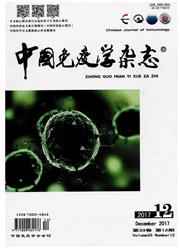

 中文摘要:
中文摘要:
目的:预测人Izumo蛋白的二级结构及B细胞抗原表位。方法:以人Izumo基因序列为基础,按Chou-Fasman和Gamier-Robson方法预测其编码蛋白的二级结构,采用Karplus—Schulz方法预测Izurllo蛋白骨架区的柔韧性;按Kyte-Doolittle方法预测其亲水性、Emini方法预测蛋白质表面可能性及Jameson-Wolf方法预测抗原性指数。结果:Chou-Fasman及Gamier-Robson两种方法预测的结果均表明,Izumo蛋白含较多的α螺旋,蛋白第6—17、30~40、88—99、103~120、153—160、173~188、249~260、283.297、334-338和339—346区段可能是Q螺旋中心,第21~25、198~200、245~248和320—323区段可能是8折叠中心。用Kyte-Doolitfle、Emini和Jameson-Wolf方法分别对Izumo蛋白B细胞抗原表位进行预测结果表明,蛋白质第36~42、62~66、94~99、118~122、129~132、151~154、161~164、173~177、205~208、212~216、256~265、271~276、283~288、314—318和336—350区段附近很可能为B细胞表位优势区域。结论:该研究结果有助于确定Izilmo蛋白的B细胞优势表位及发挥免疫避孕的活性部位。
 英文摘要:
英文摘要:
Objective: To predict and analyze the secondary structure and B cell epitopes of Izumo protein. Methods: The secondary structure and flexible regions of Izumo protein were predicted by the methods of Chou-Fasman, Gamier-Robson and Karplus-Schulz. Moreover, hydrophilicity plot, surface probability plot and antigenic index of Izumo protein were predicted by the methods of Kyte-Doolittle, Emini and Jameson-Wolf, respectively. Results: Izumo protein contained more a helix regions. There were several centers of α helix in the regions of 6-17, 30-40,88-99,103-120,153-160,173-188,249-260,283-297,334-338 and 339-346 of lzumo protein, and several centers of β sheet in the regions of 21-25,198-200,245-248 and 320-323. Moreover, many distinct B cell epitopes in Izumo protein possibly localized in the regions of 36- 42,62-66,94-99,118-122,129-132,151-154, t61-164,173-177,205-208,2!2-216,256-265,271-276,283-288,314-318 and 336-350. Conclusion: These results are helpful for identification of the dominant B cell epitopes and the functional domains of Izumo protein.
 同期刊论文项目
同期刊论文项目
 同项目期刊论文
同项目期刊论文
 期刊信息
期刊信息
